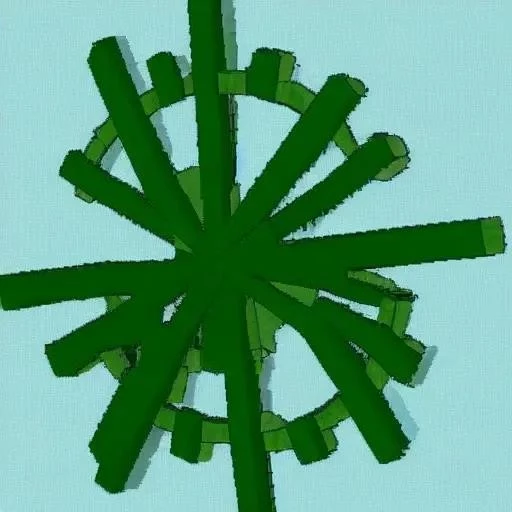By [Your Name/Publication Name]
The automotive world is undergoing a seismic shift, transitioning from the roaring combustion engine to the whisper-quiet electric powertrain. While much of the spotlight justly shines on battery breakthroughs and charging infrastructure, a less visible but equally profound transformation is quietly unfolding beneath the sleek chassis of our electric vehicles: the evolution of electric car transmission design. This often-overlooked engineering marvel is not merely a component; it is the very conductor orchestrating the symphony of power and efficiency that defines the next generation of EVs, propelling us towards a future of unparalleled performance and range.
For too long, a prevailing misconception suggested that electric vehicles, with their instant torque and broad power bands, rendered complex transmissions obsolete. Indeed, many early and even current EVs utilize a simple single-speed reduction gear, a design choice prioritizing simplicity and cost-effectiveness. However, as the industry matures and consumer expectations skyrocket, forward-thinking engineers are recognizing the immense, untapped potential that sophisticated transmission systems offer. By intelligently managing the electric motor’s output, these advanced designs are unlocking dramatic improvements in acceleration, top speed, and perhaps most critically, extending the crucial driving range that determines an EV’s practical utility.
Key Innovations in Electric Car Transmission Design
Understanding the intricate balance between simplicity and performance is paramount. Here’s a glance at the evolving landscape of EV transmission technology:
| Aspect | Description | Impact & Future Outlook | Reference/Example |
|---|---|---|---|
| Current Dominance: Single-Speed Reducers | The most common type, utilizing a fixed gear ratio to reduce motor speed and increase torque at the wheels. | Offers simplicity, reliability, and cost-effectiveness, ideal for urban driving and entry-level EVs. However, it compromises on high-speed efficiency and maximum acceleration. | Most mainstream EVs (e.g., Tesla Model 3 Long Range, Nissan Leaf) |
| Emerging Trend 1: Multi-Speed Transmissions | Incorporating two or more gears, allowing the motor to operate at its optimal efficiency point across a wider speed range. | Significantly enhances acceleration, increases top speed, and improves highway efficiency, leading to extended range and a more dynamic driving experience. Complexities include packaging and control. | |
| Emerging Trend 2: Integrated Drive Units (IDUs) | A compact module combining the electric motor, power electronics, and transmission into a single, optimized unit. | Reduces weight and size, simplifies vehicle architecture, and improves overall system efficiency by minimizing energy losses between components. Crucial for packaging in smaller vehicles. | Many next-generation EV platforms, e.g., Hyundai E-GMP |
| Future Concepts: Advanced Systems | Includes Continuously Variable Transmissions (CVTs) adapted for EVs, advanced torque vectoring systems, and AI-optimized gear ratio selection. | Promises seamless power delivery, unparalleled efficiency across all speeds, and superior handling dynamics. Research focuses on minimizing losses and maximizing durability for high-torque EV applications. | Experimental EV CVTs, advanced software for predictive gear shifting |
| Key Benefits of Evolved Designs | Beyond basic propulsion, sophisticated transmissions contribute to thermal management, regenerative braking optimization, and overall vehicle dynamics. | These benefits translate directly into greater driver satisfaction, reduced charging frequency, and a more robust, long-lasting powertrain. | Improved thermal management in high-performance EVs, enhanced kinetic energy recovery |
The shift towards more sophisticated systems is driven by an insatiable demand for greater performance and efficiency. Pioneers like the Porsche Taycan, boasting a groundbreaking two-speed transmission on its rear axle, have vividly demonstrated the tangible benefits. This ingenious setup allows for scorching acceleration off the line in first gear, while the taller second gear ensures phenomenal efficiency and a higher top speed during sustained highway cruising. This is not merely an engineering feat; it’s a profound statement about the future trajectory of EV capabilities, dramatically expanding their appeal beyond urban confines.
Unlocking Untapped Potential: The Engineering Imperative
Why this renewed focus on gearboxes in electric vehicles? The answer lies in the fundamental physics of electric motors and the nuanced demands of real-world driving. While electric motors indeed possess a remarkably broad power band, their peak efficiency often occurs within a narrower RPM range. A multi-speed transmission acts like a finely tuned musical instrument, allowing the motor to consistently operate in its “sweet spot,” thereby minimizing energy waste and maximizing the conversion of electrical power into kinetic motion. “The transmission is no longer just about changing gears; it’s about optimizing the entire powertrain’s energy management,” explains Dr. Lena Karlsson, a leading expert in EV powertrain development. “By integrating insights from AI and advanced control algorithms, we’re crafting systems that dynamically adapt to driving conditions, delivering both exhilarating performance and unprecedented range.”
Consider the analogy of a bicycle with multiple gears. While a single-speed bike might suffice for flat terrain, tackling hills or achieving high speeds on a downhill stretch becomes significantly easier and more efficient with a versatile gear system. Similarly, in an EV, a well-designed transmission ensures that whether you’re battling rush-hour traffic, ascending a steep incline, or effortlessly gliding along an open highway, the electric motor is always performing at its zenith. This translates directly into a more responsive driving experience and, crucially, fewer stops at charging stations, alleviating range anxiety—a persistent barrier to widespread EV adoption.
The Road Ahead: Innovation and Integration
The future of electric car transmission design is incredibly dynamic and promises even more radical advancements. We are witnessing the rise of integrated drive units (IDUs), where the motor, power electronics, and transmission are seamlessly housed within a single, compact module. This integration dramatically reduces weight, improves packaging efficiency, and minimizes energy losses between components, leading to an even more refined and efficient powertrain. Furthermore, research into advanced concepts like electric CVTs (Continuously Variable Transmissions) and sophisticated torque vectoring systems is opening new frontiers, promising unprecedented control over individual wheel speeds and, consequently, superior handling and safety.
The journey towards fully sustainable transportation is complex, paved with remarkable technological innovations. The evolving landscape of electric car transmission design stands as a testament to human ingenuity, pushing the boundaries of what electric vehicles can achieve. It’s a silent revolution, yes, but one whose profound impact will resonate loudly across our roads, reshaping our perception of performance, efficiency, and the thrilling possibilities of an all-electric future. As these advanced systems become standard, they will undeniably turbocharge our collective efforts towards a cleaner, greener, and undeniably more exciting world.






